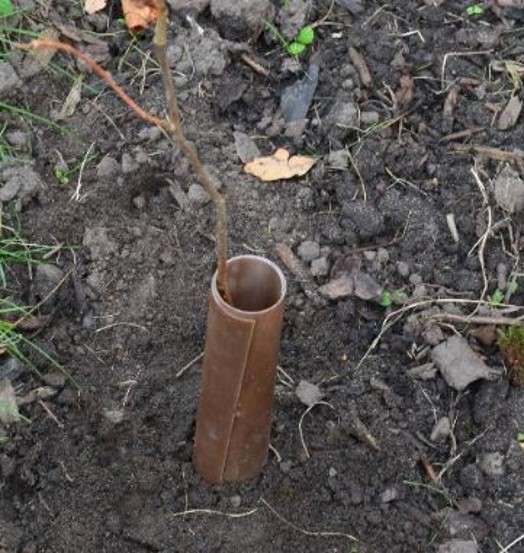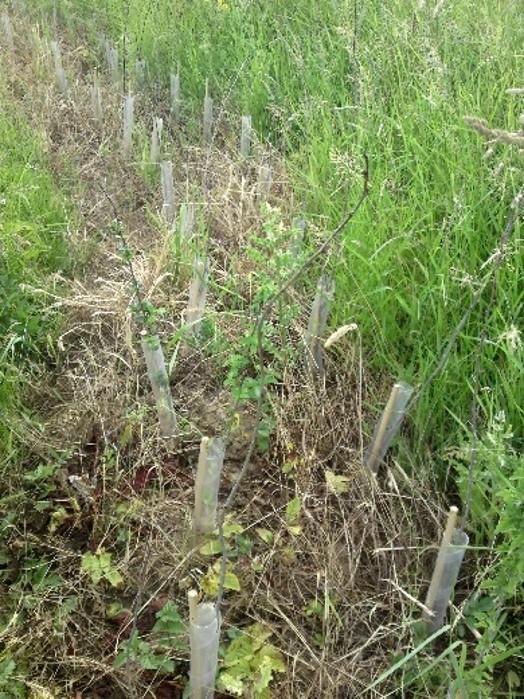Supporting guidance for Vole, Rabbit or Hare Guards
Date published: 30 March, 2015
Young shrubs are very vulnerable to damage by browsing animals.
Voles are capable of ring-barking trees and shrubs, very close to the ground. They prefer dense vegetation so good weed control around the plants can help to make conditions less attractive to voles.
Rabbits browse the leaves, and strip the bark from young plants.
Hares bite the tops off young plants and can be quite systematic, working down lines of plants. They can also reach quite high by standing on their rear legs.
Species with thin bark, such as beech, ash and gean are more vulnerable to bark-striping.
It is important to know what browsing pressure, and which species are likely to affect your hedges, and to consider the future management of your hedges when selecting the most appropriate form of protection.

Solid wall cylindrical vole guard – Credit: Tony Seymour – © TFE 2014
How to increase your success when using plant guards
- make sure guards can adjust to the thickening of plant stems by expanding, unrolling or splitting
- push the guard firmly into the ground, around the stem of the plant to prevent voles and mice from browsing it. Make sure the shelters are not held-up by surrounding vegetation. Avoid pushing the shelters in too deep as this may restrict root-growth
- select the diameter of shelters needed for the proposed size and type of plant stock.
- use solid-wall shelters for better protection from browsing animals, herbicides and voles, rather than mesh and spiral guards. Solid-wall shelters are suitable for new hedges programmed for laying, as the shelters may be removed at that time and will provide a 'clean' stem for cutting
- spiral and mesh guards allow lower, lateral branch growth than solid shelters but provide less effective protection from voles, mice and herbicides. Lateral growth outside the guard may also be browsed. Spiral guards are only suitable for single-stemmed saplings, mesh guards for bushier plants
- use stakes with 0.6 metre and 0.75 metre shelters; they should be at least 15 centimetres longer than the shelter. Use 0.9 metres canes with spiral guards

Spiral guards – Credit: Tony Seymour – © TFE 2014
How to reduce vole damage
- guards are usually solid plastic tubes split vertically and supported by the plant. Secure them by pushing them approximately 1.5 to 2 centimetres into the ground. Make sure that the soil around the guard and plant is firm following installation. Stakes or canes are not normally needed except in very soft soils and on exposed sites
- you can remove and re-used the guards once the plants are established
- spiral guards are only effective against voles if they are closed and capable of being pushed into the ground
- net-type guards are not as effective as solid guards because rodents can chew through them
- solid tree and shrub shelters cut to size may be used but you need to secure them with a stake and cane and pushed into the ground
For rabbits
- use 0.6 metre tall tree or shrub shelters using split plastic tubes or plastic mesh or spiral guards
For hares
- use 0.75 metre tree shelters or plastic mesh guards
